Table of contents
Cloves are the raw, dried and unopened flowers of a tropical tree - the clove tree ( Syzygium aromaticum ). Organic cloves come from a production that takes the well-being of nature and people into account.
Use in the kitchen
Cloves have a more complex taste; a combination of sweet, bitter and a gentle spiciness. They are mainly used to season desserts such as apple sauce, preserved pears, plum jam and compote. In this combination they harmonize with cinnamon, nutmeg, star anise and lemon . Small doses of cloves give stocks, soups, sauces and marinades a special flavor. Cloves (Nägeli) are often used only to convey flavor and are removed after boiling.
Spicy dishes such as rice dishes, pastries, curries, red cabbage (blue cabbage) and pickled vegetables (cucumbers or sauerkraut ) get a special taste from cloves - e.g. together withpepper, bay leaves, allspice, cardamom, ginger and coriander .
Whole cloves are added to hot drinks such as mulled wine or punch in the run-up to Christmas. Certain liqueurs or fruit juices only get their special aroma when they contain cloves.
Ground Cloves develop their unique aroma the fastest. In this form they are known in Christmas biscuits or as an ingredient in curry powder .
Only the clove head tastes sweet, aromatic to spicy, burning, while the stem is penetratingly bitter.
Can you eat cloves raw? Cloves can also be eaten raw. However, it is not recommended to eat cloves raw. The taste is much too intense. As a spice, they are used heated and only very sparingly.
Vegan recipe for rice with cloves
This is a very simple recipe that gives rice a special flavor: Take the desired amount of rice, a whole small onion and 3-4 cloves. Put the cloves in the peeled onion and cook or sauté them with the rice. If you remove the cloves from the onion, you can also enjoy them with a light clove flavor. You can also refine the healthy aromatic rice with cardamom and a bay leaf (also sautéed) if you like.
Tea preparation
To make a stomach-soothing clove tea, you need about 200 ml of boiling water, 3 fresh cloves and a pinch ofvanilla powder . Pour the boiling water over the ingredients and let them steep for about 8-10 minutes. Then remove the clove heads, sweeten with honey if desired and enjoy the soothing, warming tea.
Vegan recipes with cloves can be found under the note: " Recipes that have the most of this ingredient ".
| Not only vegans or vegetarians should read this: Vegans often eat unhealthily. Avoidable nutritional errors . |
Shopping - Storage
Cloves can be bought all year round at most supermarket chains such as Aldi, Lidl, Migros, Coop, Denner, Volg, Spar, Rewe, Edeka, Hofer, Billa etc. In organic supermarkets (eg Denn's Biomarkt or Alnatura) and Organic cloves are available in health food stores. Poor quality can be recognized by wrinkled, dusty cloves that are often broken or without heads. A color that is too dark can be a sign of poor quality. The "floating test" also provides information: poor quality cloves float horizontally in water: such cloves have hardly any essential oil. 6 Good quality cloves can be recognized by their plump appearance. The cloves sink to the bottom in the water or float upright with the heads pointing upwards.
The best quality comes from the Moluccas, Zanzibar and Madagascar. Unfortunately, the packaging rarely states the origin.
The availability of cloves varies depending on the size of the store, catchment area, etc. Our recorded food prices for the DA-CH countries can be found above under the ingredient image - and by clicking you can see their development at various suppliers.
Storage tips
Whole cloves retain their aroma for a very long time if stored correctly. If stored in a dry place, protected from light and heat (!), the aromatic buds will last for 2-5 years. If you prefer to use ground cloves, you can grind the whole cloves in a spice mill if necessary.
Ingredients - Nutritional values - Calories
Here we realistically show you the ingredients of spices and herbs per 1 g (instead of per 100 g as usual).
Dried cloves have an energy content of 0.27 kcal/g. They have a very high carbohydrate content of 78%, a significant fat content (15%) and only a small amount of protein (7%). When dried, the water content is less than 10%. 3
Manganese, vitamin K and iron are the most important essential nutrients that cloves offer. However, because of the small amount consumed, they and the macronutrients only contribute minimally to meeting the respective daily requirement (except manganese). Far more important for the health value are the secondary plant substances in this ingredient, which can only have an effect in trace amounts. Although all herbs and spices have many health-promoting ingredients, we deliberately avoid the insubstantial buzzword "superfood" here.
The complete ingredients of cloves, the coverage of the daily requirement and comparison values with other ingredients can be found in our nutrient tables. In the article Nutrients explained you will get a detailed insight into the topic.
Effects on health
The eugenol contained in it has an antimicrobial effect and inhibits the growth of fungi, bacteria and viruses. A study from Portugal showed a promising effect against Candida and Aspergillus fungi. 1,8 Clove oil is said to be particularly successful in the treatment of vaginal yeast infections. 9 Certain acne-causing bacteria can also be treated naturally with clove oil. 10 In addition, the ingredient eugeniin is said to have an antiviral effect against herpes (using an aqueous extract of cloves). 1
Cloves have a repellent effect against mosquitoes without harming them (repellent). Clove oil protects against the mosquito species Anopheles albimanus and Aedes aegyptii for about 1.5-3.5 hours. Ticks ( Ixodes ricinus ) also seem to be repelled by clove oil (4-8 hours). The oil can also help against cockroaches. 1
The essential oil eugenol contained in cloves has a local pain-relieving effect and is used, for example, for toothache. 1 A tincture (ethanolic extract) is usually used to disinfect the mouth and throat and as a stomach stimulant. The crategolic acid contained in cloves is partly responsible for the analgesic (pain-relieving) effect. 7
Cloves have a significant anti-inflammatory effect. There is also evidence of anti-allergic and anti-diabetic effects. Ingredients in cloves are said to help with diabetes by controlling certain genes in liver cells so that sugar metabolism is better regulated naturally. 12 Clove extracts have strong antioxidant properties due to the high content of phenolic components and therefore also have anti-carcinogenic and anti-mutagenic potential. Cloves may even have a protective or prophylactic effect when in contact with carcinogenic substances. 1
Due to their aromatic taste, cloves stimulate the appetite, aid digestion and help against flatulence (carminative). 1 In medicine, the essential clove oil is found in lemon balm spirit, a stomach-strengthening agent, or in other appetite-stimulating tonics. 4
Clove oil inhibits platelet aggregation and can counteract thrombosis. It also has sedative and anxiolytic activity. 1
Cloves as a spice can have a positive effect on our health. The dosage should be determined individually. Clove oil is generally used in a very diluted form (a few percent). 1 We can only give a subjective estimate for the use of whole cloves - we consider eating two cloves every day (in recipes) to be a good amount.
Secondary plant substances
Many of the health effects of cloves can be attributed to the secondary plant substances they contain. Our article on secondary plant substances provides an overview of the classification of substance groups, their occurrence in foods and possible effects on humans. Cloves contain the following secondary plant substances: 15–22% essential oil (mixture of various secondary substances). 18 The main components are eugenol (70–95% in clove oil) as well as eugenyl acetate (up to 17%) and β-caryophyllene (5.0-14%). Smaller amounts of humulene, benzaldehyde, benzyl acetate, γ- and α-caryophyllene, limonene, α- and β-pinene, heptan-2-one and octan-2-one (= methyl-n-heptyl ketone) are also present. These both play a major role in the smell. It also contains tannins, gallotannins (including the ellagitannin eugeniin) and phenolcarboxylic acids (caffeic acid derivatives), e.g. gallic and ellagic acid, caffeoyl, coumaric, caffeic and ferulic acid. It also contains flavonoids, e.g. astragalin, isoquercitrin and hyperoside, as well as triterpenes (1% oleanolic acid, 2% crataegolic acid), chromone glycosides (biflorin, isobiflorin), chromone-C-glycosides and some phytosterols (β-sitosterol and small amounts of stigmasterol and campesterol). 1 A study from Spain classified cloves as a good antioxidant (as did oregano, rosemary, thyme and sage ). 5,15
However, it should be noted that the composition of secondary plant substances in cloves can vary depending on the variety, time of harvest, storage, drying and growing conditions. 4 Therefore, quantities are only of limited use and should only be understood roughly.
Dangers - Intolerances - Side effects
Undiluted clove oil can cause tissue irritation. 21
Cloves can cause severe irritation to mucous membranes if overdosed. This danger exists with all spices with a high proportion of essential oil. However, the intense smell should deter excessive consumption. 4 Too much clove oil can damage tissue and trigger allergic reactions. 1
Cloves are considered to induce labor, which is why pregnant women should avoid too much cloves or clove oil. If you want to induce labor, teas containing cloves are recommended to induce labor.
Use as a recognized medicinal plant
Only clove oil and the eugenol isolated from it are used medicinally. There is a positive monograph from Commission E as well as an HMPC monograph (traditional use), an ESCOP and a WHO monograph. Clove oil can be used for inflammation of the mouth and throat area and for local pain relief in dentistry. It is also used for the symptomatic treatment of chronic anal fissures. 1,21
Folk medicine - naturopathy
The flowers, the oil of the clove and aqueous or ethanolic extracts are used as a traditional drug (medicine). In folk medicine, clove oil is said to have an analgesic effect when applied externally to treat headaches. 1
It was believed that cloves strengthen the heart, head and stomach. The disinfecting effect of cloves was already known very early on. In the 'Work of the Yellow Emperor', written hundreds of years ago in ancient China, 19 there is a recommendation to treat needles with clove bud oil. Western medicine also recognized the benefits of clove buds and used them to disinfect surgical equipment for a long time. 1
Due to their antiseptic, slightly anaesthetic effect, cloves are known as an externally applied toothache reliever. 13 Chewing whole cloves for toothache or bad breath is a well-known household remedy.
Cloves are used internally for gastrointestinal inflammations and intestinal parasites. In China they are taken against nausea, hiccups, so-called stomach cold and impotence. 14
The disinfectant effect of cloves was particularly important in the Middle Ages during epidemics of plague and cholera. 4
For stomach problems, flatulence and diarrhea, a decoction, a decoction or aqueous extract of cloves is traditionally used. Colds, muscle pain and small wounds were also traditionally treated with cloves (oil or tincture). 20
In addition, cloves are used in the form of tinctures (ethanolic solutions) for muscle pain and rheumatic complaints due to their local anesthetic effect. Applied to a mosquito bite, it reduces the inflammatory reaction. Clove oil can be helpful for stomach ulcers. Researchers have proven a preventive effect on the development of stomach ulcers and a promoting influence on their healing. This is because the drug can promote the production of mucus in the stomach. Cloves are generally used for chronic complaints in the upper abdomen and for bad breath. Clove oil can also help with nausea. 1,21
Ecological footprint - animal welfare
A cooperation project between various research and environmental organizations calculated the CO 2 footprint of cloves: They are 50% better than the average of the foods examined and are therefore a climate-friendly food. 1 kg of cloves has 0.26 kg CO 2 eq/kg; converted to 1 g, a usual consumption amount, the CO 2 footprint is incredibly small (0.00026 kg CO 2 eq/g). 22
CarbonCloud, a Swedish carbon footprint database, found that cloves from Sri Lanka emit 1.06 kg CO 2 eq/kg (100% caused by agriculture) .23 Surprisingly, imports from tropical countries such as Sri Lanka have a negligible impact on the carbon footprint. The exception is transport by plane, but this is mainly used for foods that spoil quickly; 27 dried cloves are not included.
According to Mekonnen and Hoekstra (two important scientists in this field), the global average water footprint of cloves is an impressive 61,205 l/kg. This is an enormous amount, even if 59,834 l of this is green water - the clove tree can and should only be cultivated in rainy areas. Hardly any other food requires so much water. Only vanilla has an even higher footprint at 126,505 l/kg. Of course, these figures need to be put into perspective: per gram of clove - one portion - only 61.2 l is needed. 24 A 150 g portion of beef requires an average of 2312.25 l (15,415 l/kg). 25
Despite extensive research, we were unable to find any reports on conventional or organic cultivation of cloves; however, cultivation according to organic principles (according to IFOAM : health, ecology, fairness and welfare) is generally preferable. 26 This is an important aspect, particularly in view of the strenuous and dangerous harvest. Often, the harvest workers can only rely on their courage and experience during the harvest at dizzying heights. Workers repeatedly fall and suffer serious injuries or even death. 11 Controls and certification systems are (survival) important for such workplaces.
For detailed explanations of various sustainability indicators (such as ecological footprint, CO2 footprint, water footprint), see our article: What does the ecological footprint mean?
Worldwide occurrence - cultivation
The clove tree, which belongs to the myrtle family (family: Myrtaceae), is native to the Moluccas and the Philippines. Its center of origin is the volcanic island chain of Ternate, Tidori, Mare, Moti and Makian, which lie west of New Guinea. In this region, wild clove trees can still be found in low mountain forests. In contrast to cultivated trees, the wild trees have larger and less aromatic buds and leaves; the plant contains fewer essential oils. 2 Today, the tree is cultivated in many tropical regions of the world. The tree prefers nutrient-rich, well-moistened but water-permeable soil. 1,21
The first description of cloves can be found in an Ayurvedic book from 1500 BC. Cloves came to Europe with the Arabs in the 4th century and 300 years later were an important part of the medicinal treasures of the time. 1
Later, the largest quantities were produced on the African islands of Pemba and Zanzibar until the beginning of the 20th century. Today, the majority (80%) comes from Indonesia. For a long time, the Dutch had a monopoly on cloves, and even today a large proportion of the cloves from the Moluccas are shipped there.
Cultivation - Harvest
Harvesting cloves is a very laborious process and must be done at the right time. When the clove buds turn from green to pink, before the flowers open, the buds must be carefully picked by hand. In some places they are gently knocked off the trees with bamboo sticks, but most often they are picked from platforms. At this point the bud is green or starting to turn red. The buds must then be dried as quickly as possible. They are usually dried on grass mats in the sun - a difficult balance between too much and too little heat. During the drying process the cloves lose a lot of water, losing up to 3⁄4 of their fresh weight. The drying process gives them their dark brown color. Each tree produces around 2 kg per year, with the main harvest from June to September . 2 Good, fresh cloves feel greasy and lose some oil when you press your fingernail into the stem.
Normally, the clove tree is hardly susceptible to pests. However, fungal pathogens such as Valsa eugeniae or Cryptosporella eugeniae can cause great losses. They penetrate the plant's vessels through the roots and cause the young tree to die. In 1950, Valsa eugeniae destroyed half of the plantations in Zanzibar. 17
Growing your own
You can grow a small clove tree in a pot . The tree needs a bright location and temperatures around 20 °C all year round.
Further information
The clove tree can reach a height of up to 10 m, sometimes even 20 m, with a trunk diameter of up to 40 cm. Even in the tropical maritime climate, the optimal location for clove trees, the plants only bear fruit in the 6th year. It is typical and special for myrtle plants that the whole tree, in all its parts, contains the aromatic-smelling essential oil. The leaves grow elliptically, 5-15 cm long and have a shiny, leathery surface that is translucently dotted. At the end of the branch, 5-20 yellowish-white flower buds grow from the leaf axils on the three-part umbels, from which whitish-pink flowers (triple, three-forked umbels) later develop. 1, 4,21
The genus Syzygium comprises between 120 and 500 species (depending on the botanical definition). 1
Less out of a risk of confusion, but rather as a substitute, one could mention the avens ( Geum urbanum ), a medicinal herb from the rose family (Rosaceae). The rootstock of the true avens smells faintly of cloves, which made it popular in the kitchen as a clove substitute. It also has a mild pain-relieving and strengthening effect. Avens is used for toothache and gastrointestinal disorders. 4
The ornamental plant 'carnation' has nothing in common with the clove except for the name. The flower was probably named after the clove because it has a similar scent.
Alternative names
The genus name Syzygium is derived from the Greek 'syzygios', which can be translated as 'paired' or 'united'; because the petals are united to form a cap. Aromaticum comes from the Greek 'aromaticos' and 'aroma', which means something like spice or fragrant herb. The German name 'Nelke' is derived from the word 'nail'; the buds are reminiscent of nails in shape (see the clove pictures above). Related names can be found in almost all Indo-European languages. 1
'Clove' is the English name for cloves; the tree is 'clove tree'. In German, there are countless alternative names for the spice: Gewürzengelein, Kreidenelke (Kreidnelken), Kramernageln, Kramernegelen, Muskatnogel (Middle High German), Muskatnogelken (Middle High German), Nägel (Middle High German), Nägelin (Middle High German), Nagelkin (Middle High German), Nagelbaum (Middle High German), Nagelbom (Middle Low German), Nagelein, Nagelin, Nagellin, Nalen (Middle Low German), Necheleche (Old High German), Negelken, Neghelken, Neilikin (Middle High German), Nelchen (Middle High German), Nelchin, Nelgin (Middle High German), Nelekin (Middle High German), Nelikin (Middle High German), Neylicken (Middle High German) and Würznelken. Other names are: grot Necel, grote Negelken, Neghelken, large Nelken, Mutternägelen, Nägeli-Gewürz and Mutternelken.
The drug name is Caryophylli flos for cloves and Caryophylli aetheroleum for clove oil. 1
There are some obsolete Latin synonyms: Eugenia caryophyllata Thunb., Eugenia caryophyllus (Spreng.), Eugenia aromatica (L.) Baill. or Caryophyllus aromaticus L. 1
Other uses
Essential oil is obtained from the flower buds, young leaves and tree bark by distillation, and is used primarily in pharmaceuticals. 13
Clove cigarettes (kretek) are very popular in Indonesia. This is why the highest consumption of cloves is recorded there. This mixture of tobacco, crushed cloves and other ingredients is known in German-speaking countries under the brand name Gudang Garam.
Cloves are also a popular ingredient in incense used in rituals, 7 as well as in herbal pillows and aromatic baths. Cloves stuck in oranges or lemons make a popular and pleasantly scented decoration for the Christmas season.
The eugenol in cloves can be part of a temporary dental filling, mixed with zinc oxide. 20
Cloves contain bioactive substances that are used as ant repellent.
The essential oil of cloves has potential as an environmentally friendly pesticide. 16
Bibliography - 26 Sources
| 1. | Bäumler S. Heilpflanzenpraxis heute – Arzneipflnzneporträts [E-Book]. 3. Auflage. Elsevier; 2021:904-912. |
| 2. | Swadling P, Wagner R, Laba B. Plumes from Paradise [E-Book]. Sydney University Press; 2019. |
| 3. | USDA United States Department of Agriculture. |
| 4. | Pahlow M. Das grosse Buch der Heilpflanzen. Gesund durch die Heilkräfte der Natur. Nikol: Hamburg. 2013. |
| 5. | Viuda‐Martos M, Ruiz Navajas Y et al. Antioxidant activity of essential oils of five spice plants widely used in a Mediterranean diet. Flavour & Fragrance J. 2010;25(1):13-19. |
| 6. | Schwedt G. Chemie der Arzneimittel: einfache Experimente mit Medikamenten aus der Apotheke [E-Book]. Wiley-VCH Verlag GmbH & Co. KGaA; 2018:49. |
| 7. | Rätsch C. Enzyklopädie der psychoaktiven Pflanzen. Botanik, Ethnopharmakologie und Anwendungen. AT-Verlag: Aarau. 2018. |
| 8. | Pinto E, Vale-Silva L et al. Antifungal activity of the clove essential oil from Syzygium aromaticum on Candida, Aspergillus and dermatophyte species. Journal of Medical Microbiology. 2009;58(11):1454-1462. |
| 9. | Ahmad N, Alam MK, Shehbaz A et al. Antimicrobial activity of clove oil and its potential in the treatment of vaginal candidiasis. Journal of Drug Targeting. 2005;13(10):555-561. |
| 10. | Fu Y, Chen L et al. The antibacterial activity of clove essential oil against propionibacterium acnes and its mechanism of action. Arch Dermatol. 2009;145(1):86-88. |
| 11. | Soewardi H, Sujono R. A new development of the clove harvest safety tool for farmers. J Phys: Conf Ser. 2019;1367(1):012040. |
| 12. | Prasad RC, Herzog B et al. An extract of Syzygium aromaticum represses genes encoding hepatic gluconeogenic enzymes. Journal of Ethnopharmacology. 2005;96(1-2):295-301. |
| 13. | Delaveau P, Lorrain M, Mortier F et al. Geheimnisse und Heilkräfte der Pflanzen. Das Beste: Zürich. 1978. |
| 14. | Bown D. Encyclopedia of Herbs & their uses. DK: London. 1996. |
| 15. | Cortés-Rojas DF, de Souza CRF, Oliveira WP. Clove (Syzygium aromaticum): a precious spice. Asian Pacific Journal of Tropical Biomedicine. 2014;4(2):90-96. |
| 16. | Milićević Z, Krnjajić S, Stević M, et al. Encapsulated clove bud essential oil: a new perspective as an eco-friendly biopesticide. Agriculture. 2022;12(3):338. |
| 17. | Brücher H. Tropische nutzpflanzen: Ursprung, Evolution und Domestikation. Springer-Verlag; 2013. |
| 18. | Hänsel R, Sticher O, Steinegger E, eds. Pharmakognosie - Phytopharmazie. 8., überarb. und aktualisierte Aufl. Springer; 2007:103. |
| 19. | Charité Universitätsmedizin Berlin. Pressemitteilung. 2011. |
| 20. | European Medicines Agency. Caryophylli flos - herbal medicinal product. |
| 21. | Gewürznelken - Gewürznelkenbaum – Syzygium aromaticum (L.) merr. Et l. M. Perry - arzneipflanzen-lexikon. |
| 22. | Greenpeace Schweiz, Stadt Zürich, Planted Foods AG, Branding Cuisine, Tinkerbelle, Inge, myblueplanet, ProVeg International, Dr. Earth, FightBack und Eaternity. All You Can Eatfor climate - Poster. ayce.earth. 2022. |
| 24. | Mekonnen MM, Hoekstra AY. The green, blue and grey water footprint of crops and derived crop products. Hydrol Earth Syst Sci. 2011;15(5):1577–1600. |
| 25. | Mekonnen MM, Hoekstra AY. A Global Assessment of the Water Footprint of Farm Animal Products. Ecosystems. 2012;15(3):401–415. |
| 26. | |
| 27. | Ritchie H, Roser M. You want to reduce the carbon footprint of your food? Focus on what you eat, not whether your food is local. Our World in Data. Published online 2020. |

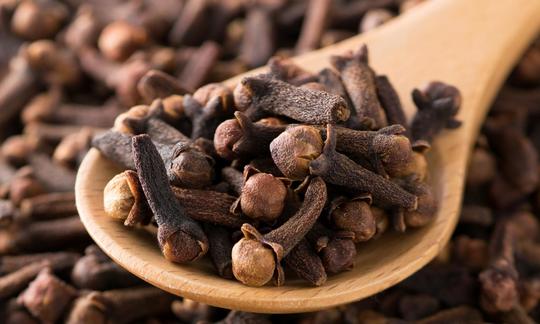

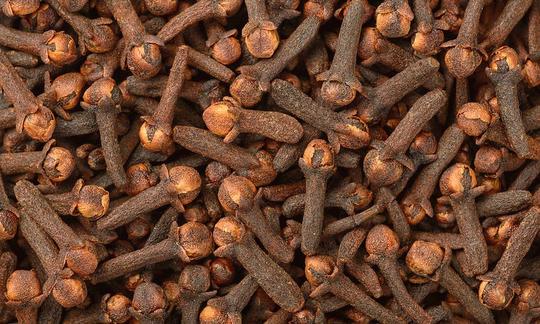

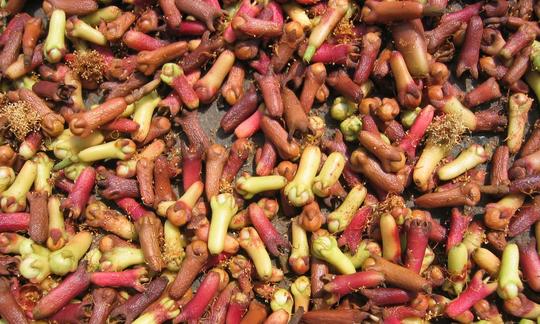

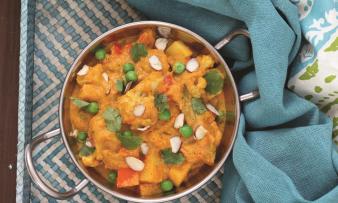
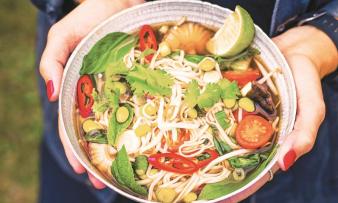
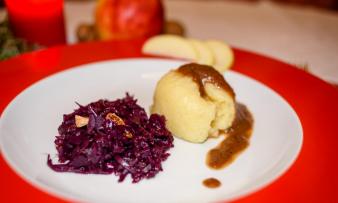





Comments